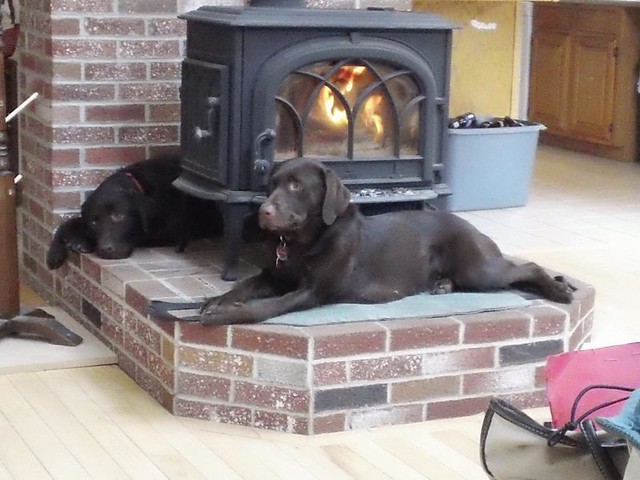Pedxing -- thanks for sharing that experience. I think we all (dog owners and those who hike with dog friends) can take a bit of wisdom away from this -- and that makes it relevant to the thread IMHO.

You all did an amazing job warming and safely transporting the dog to Ski Patrol.
I'll echo Chip's sentiments -- I don't take hiking with my dogs in winter lightly -- lots can go wrong and I'm responsible for their safety. A few weeks back, I was hiking with a friend in the Presis -- I had left my dogs home and he decided to leave his home, too. Conditions above treeline were very good -- lots of warm sunshine, no wind, very little snow or ice. All day he's shaking his head thinking he wish he had brought his dog. Then we began our descent -- nearly a mile of very tricky blue ice bulges along the Ammonusuc Ravine Trail. There's NO WAY either of us would have wanted our dogs on that trail on that day. The risks to us and them would be very high, and at the end of a long day, it would be very difficult for us if we had found ourselves in a rescue situation.
I've been giving some more thought to the OP's question since I was asked by a Moderator of another forum (dog training related) to reply to a post about conditioning a dog for a long distance hike. Since this was a training forum, I began to think about my reply in that context. But it really applies here as well.
Whenever I'm thinking of doing something new with my dogs, or teaching them something new -- I try to plan my approach using the four D's -
-Difficulty
-Distance
-Duration
-Distraction
Pertained to hiking:
Difficulty can mean terrain, weather conditions, steepness, water crossings, on trail or off trail, above treeline, new contacts such as steep ledges, bouldery areas, logs to jump over, ladders to climb up or down. How much of this will be new to my dog and have I hiked the trail before and know what we can expect?
Distance is an interesting one because it not only relates to total overall distance hiked but also
proximity to owner . I consider how much time the dog has spent off leash, and how solid his connection is to me at a distance. Additionally, distance is relevant to leash hiking dogs -- being on leash for an extended period of time is stressful, its real work for a dog mentally and physically to have his movement restricted by a leash for long periods of time (even if it IS a 16 foot long Flexi

), and as Ed pointed out, his dog Lauky gets colder because his movement is restricted.
Duration is pretty straightforward, how long will the dog be hiking -- what will his food and water requirements be and has he hiked for this long before. Will I be hiking out at nightfall, and have I hiked with my dog after dark before?
Distraction -- hiking involves a TON of stimuli -- scents, sounds, people, dogs, wildlife, you name it. Its all going to have an effect on the dog -- in terms of extra stress from stimulation. Stress and overstimulation can decrease a dog's reliability in off leash control and also put him in an off mood -- all dogs have limits.
So, with the OP's question in mind -- I will offer the above Four D's. When planning a hike, it may be helpful to your dog to keep in mind where he is at with all of the D's and increase accordingly.
I try not to increase more than one D at a time with training or hiking.

This I've learned over the past 24 years with five dogs and a couple of fosters. There's stuff I did before that I'd never do again, experience can sometimes be a harsh teacher and with respect to the doggies, they are usually the ones suffering the consequences so -- its GREAT that you are considering how to start Boone off right, Mongoose!
Happy Trails!

 and he has done 2 big hikes in the past ten days, yes? Maybe too much too soon for him?
and he has done 2 big hikes in the past ten days, yes? Maybe too much too soon for him?
